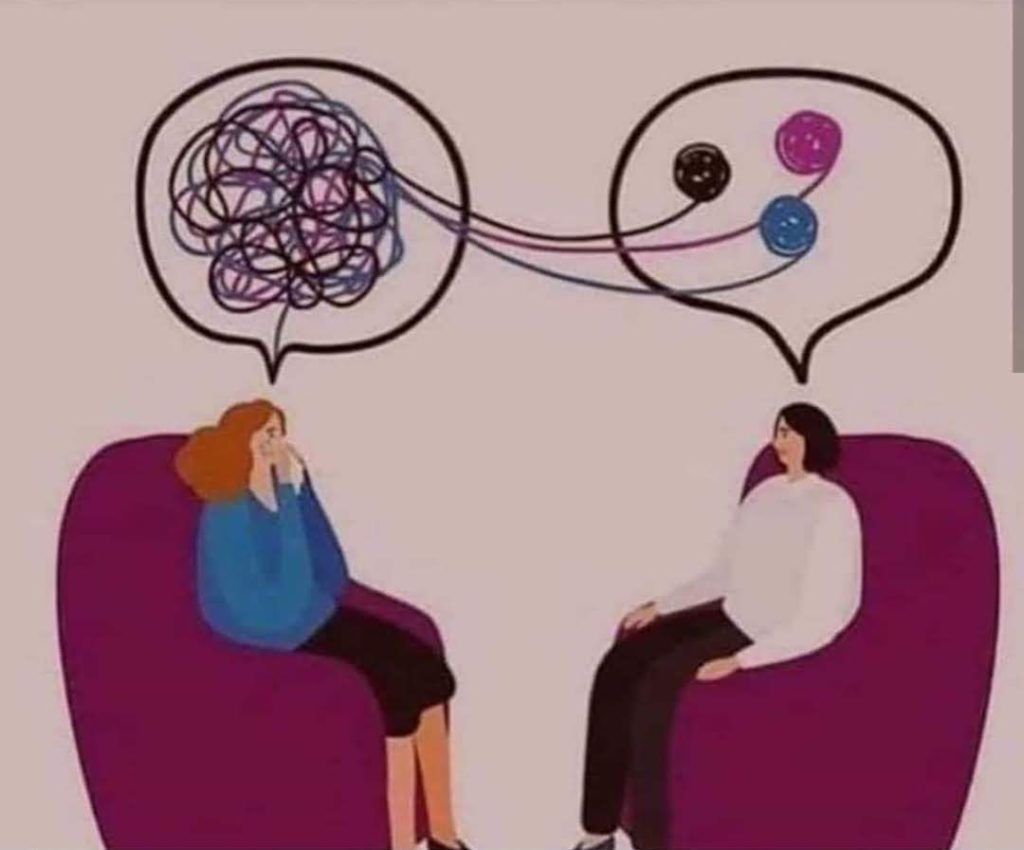24 Reflecting on the Art of Connecting and Referring

At its core, communication is about building connections and fostering meaningful relationships. The ability to convey our thoughts and emotions to others, while actively listening and understanding their perspectives, is crucial for establishing strong bonds. Effective communication skills enable us to express empathy, resolve conflicts amicably, and nurture healthy relationships built on trust and respect. Whether it’s with family, friends, or colleagues, open and honest communication forms the foundation of successful human connections.
Purpose
The purpose of this activity is to launch a reflection about people’s lived experiences of meaningful communication and to recognize that we all have the capacity to be supportive to people in our social networks. It is also an opportunity to explore the limits of peer support and when it might be necessary to refer someone for further help.
Learning Objectives
Participants will:
- Reflect on the qualities of people who have provided effective emotional support.
- Brainstorm times when referral is important and explore what local resources are available to provide crisis support.
Activity Directions
Set-Up: Place tables in a horseshoe so that people can write, but also see each other for the discussion and easily break into pairs.
- Personal Reflection: Ask participants to think about a time they were troubled about something and they had a positive experience talking to someone about their issue.
- Journal: Have participants write down all the qualities that created that supportive conversation. Why did they choose this person to talk to? How did that person demonstrate support? What qualities does someone need to have for people to feel comfortable sharing personal feelings and experiences with them?
- Post Responses: If you are in a room with a whiteboard, you could invite several people to come up to the board and write down the qualities that they listed. Or, if everyone has phones or laptops, post a mentimeter link and have them write ten qualities that can be uploaded into a word cloud on the screen. Word cloud generators allow the words to get bigger as more people use them.

- Full Group Discussion: Is there anything missed that they would like to add? What are the overall characteristics of someone that people feel comfortable turning to when they need someone to talk to?
- Pair and Share: Divide big group into dialogue dyads. Say: “We all have natural helping styles and the capacity to be effective communicators and provide support to others. What are your superpowers in supporting your family, friends and colleagues? Tell your partner about a time when you were helpful to someone who was struggling.”
- Full Group Discussion:
- Do you think people are born being good listeners?
- Do you think a good support person needs to be an expert?
- What has helped you to improve your communication skills?
- What is your reaction to the following quote by Charles Duhigg?
- What tools help people be more effective communicators?
- Discuss the following quote:
“Over the past three years, I’ve explored the research behind super communication, and encountered important lessons. Most notably, we’re not born knowing how to communicate effectively. Rather, communication is a set of skills that nearly anyone can learn. Super communicators aren’t inherently more charismatic or extroverted. Rather, they just think about communication a little bit harder, and have mastered the tools that allow them to connect.” – Charles Duhigg
6. Referral Brainstorm: Even though all of us can learn the skills to be effective listeners and supportive friends, colleagues and family members, there still might be times when you might need to refer someone for professional help. What might some of those situations be? What would be some red flags that the person who is speaking might need more assessment or help? Brainstorm with the group the resources available in your community if you need to help someone get further assessment or treatment.
Key Takeaways for Referrals
Help the group recognize that even if they are great listeners, there might be times when someone talking to them is experiencing struggles or mental instability the require more help than they are able to provide . If a listener feels overwhelmed and especially if they are hearing red flags about the person’s capacity to stay safe, it is time to connect them with a professional who can provide assessment and possibly treatment.
The “warm hand-off” is a term that describes walking with the person to a clinic or support service so they are not alone as they navigate finding help. Alternatively, it might be staying with them as they make a phone call and start the process of connecting with a skilled helper. Some people will not want to seek professional help. It is their choice, but give them referral information, and offer to help them connect with a professional when they are ready. Keep checking in with them so you are available when they are at a point where they would like to engage with services.
The one exception to this is if you think someone is actively talking about hurting themselves or others. Break confidentiality if you think it is important to get the person to immediate help. Different countries have different systems for mental health crisis support, but a family doctor can usually be a starting point to find further psychiatric or psychological assessment or support if there are no crisis lines available.
The International Association for Suicide Prevention provides links to free, confidential support from a helpline or hotline near you. You can also contact these helplines to talk about supporting and referring someone you are concerned about. Online chat, text or phone: Find a Helpline around the world
Materials
- Reflection journal on or off-line
- List of local resources and contact information for referrals
On-Line Adaptation
This activity works well on-line. The “Pair and Share” activity can be done in zoom break-out rooms.
